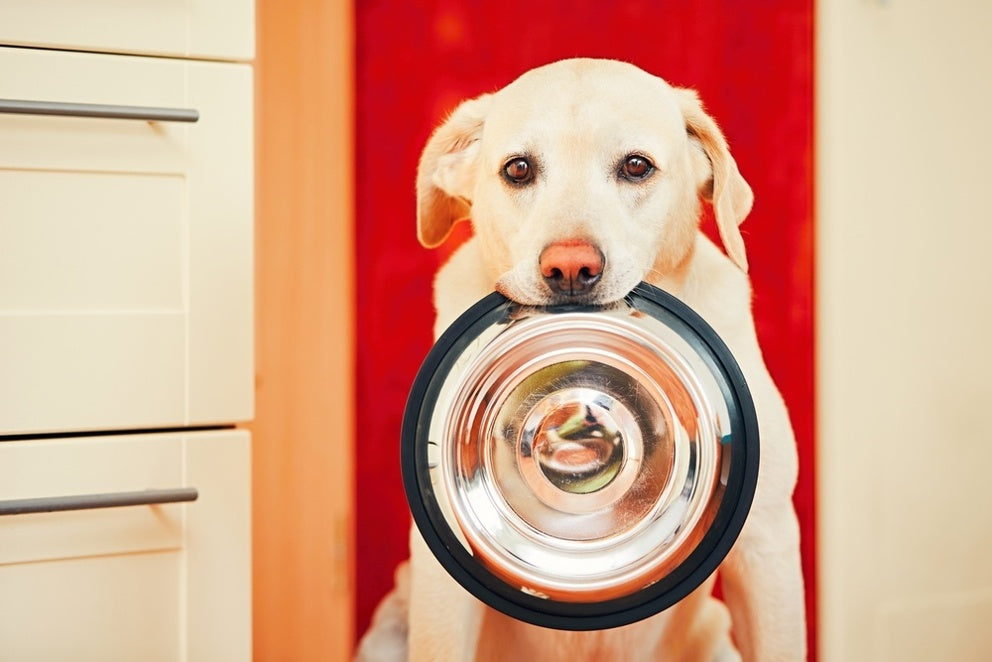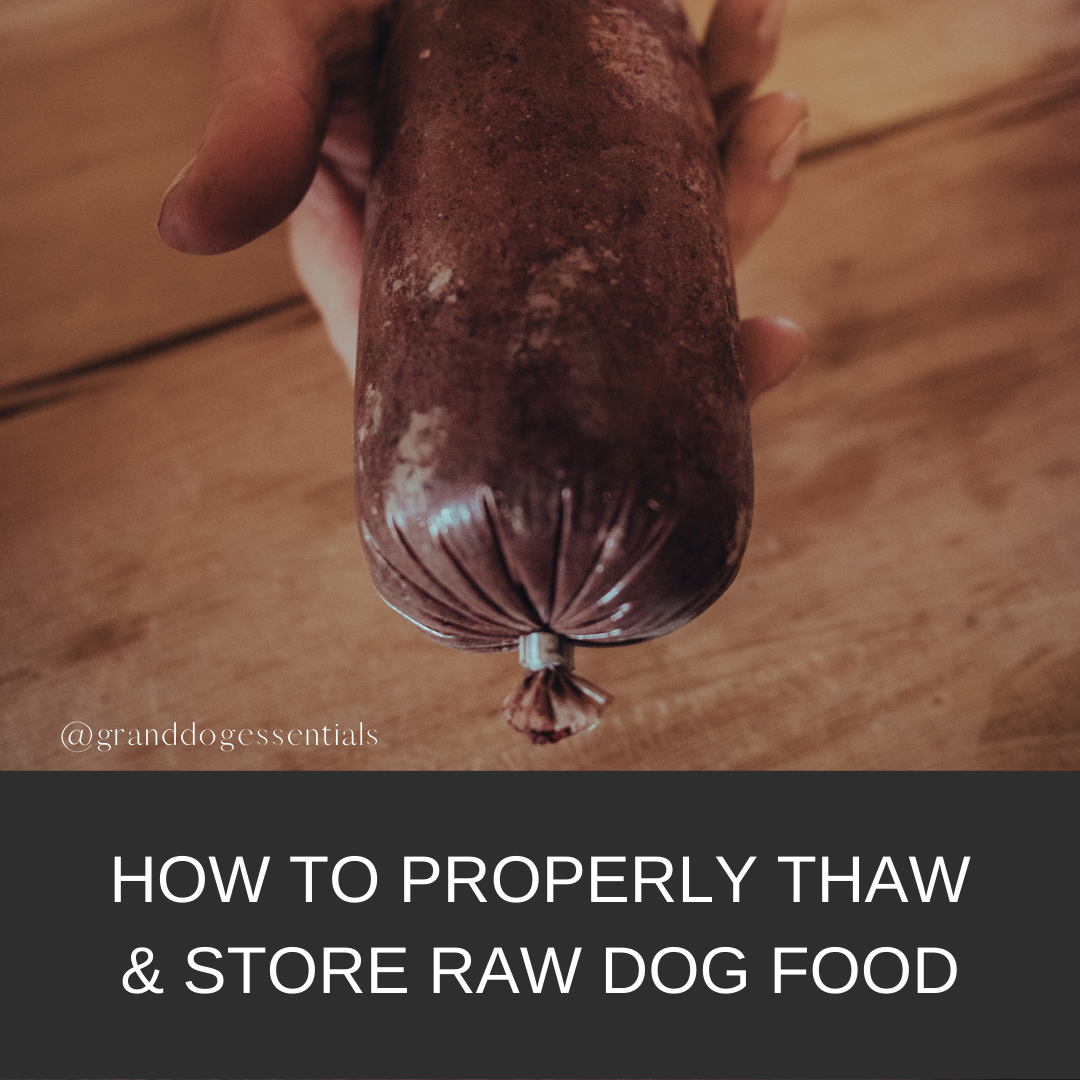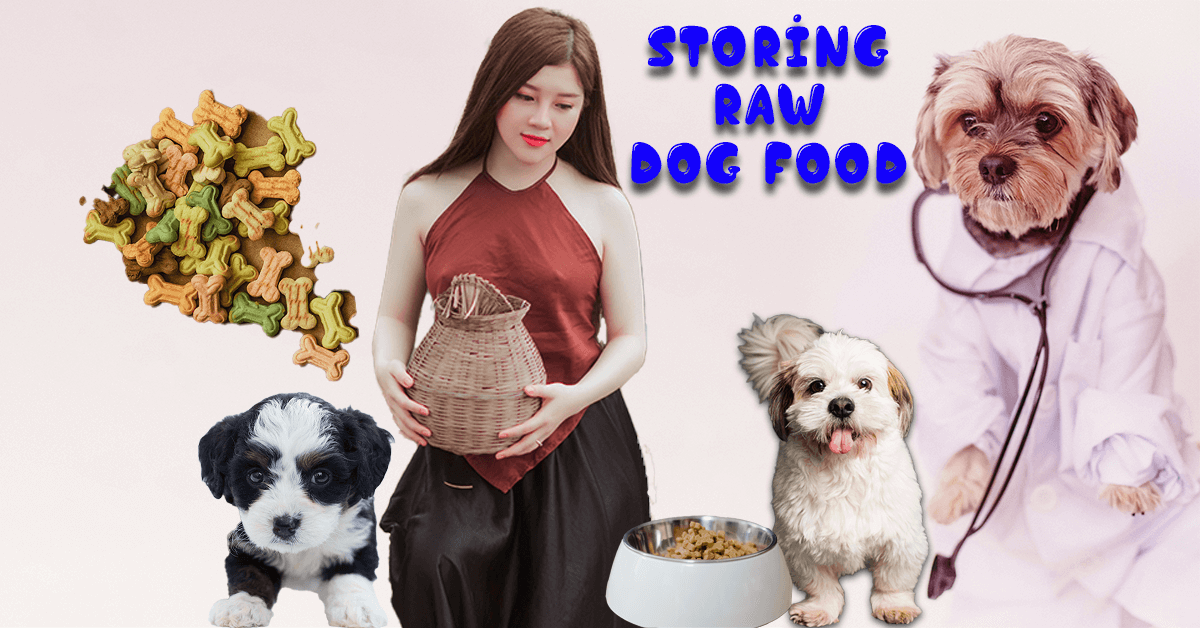Storing raw dog food at or below 40°F in airtight containers prevents spoilage. It should also be kept separate from other foods to avoid cross-contamination.
Raw dog food storage is crucial for maintaining your pet’s health and ensuring the quality of their diet. Choosing the right storage method can prevent bacterial growth and preserve the food’s nutritional value. Handling raw dog food carefully is essential, just as you would with any other type of raw meat.
Following proper storage guidelines, you can provide your furry friend with fresh, safe meals. Keeping raw dog food in the correct environment also helps to retain its natural flavors and benefits, making mealtime enjoyable and healthy for your pet. With these practices, pet owners can feel confident offering their dogs the best nutrition while minimizing risks.
The Importance Of Proper Storage For Raw Dog Food
Feeding your dog raw food can be highly beneficial for its health. Yet, the way you store this food is crucial. Proper storage ensures the meal stays fresh and safe and keeps the vital nutrients your furry friend needs. Let’s explore the reasons why correct storage is a must.
Preserving Nutritional Value
Raw dog food is packed with nutrients that dogs need for energy and health. When stored properly, these nutrients remain intact. Poor storage can lead to loss of vitamins, minerals, and enzymes. This makes the food less beneficial for your pet.
- Keep raw food in airtight containers.
- Use the fridge for short-term storage.
- If it won’t be used in a few days, freeze it.
Remember, consistency is key. Always store food at the right temperature. This keeps the nutrients just as they should be.
Preventing Contamination
Raw dog food can harbor bacteria that can harm pets and humans. Proper storage prevents these risks and keeps the food safe for everyone.
- Always wash your hands before handling raw food.
- Clean all surfaces and utensils after use.
- Store raw dog food away from human food.
Seal the food tightly to avoid cross-contamination. This ensures your dog enjoys its meals without any health concerns.
By following these storage tips, your dog will get the most out of its raw diet. Your pet will stay healthy, and you will have peace of mind. It’s a win-win!
Types Of Raw Dog Food
Choosing the right type of raw dog food is vital for your pet’s health. There are two main forms: commercially prepared and home-prepared mixtures. Each type has its benefits. Let’s explore the options available.
Commercially Prepared Options
Busy pet owners often prefer commercially prepared raw dog food. It’s convenient and comes in various types:
- Frozen raw diets: These are available in patties or bulk packages.
- Freeze-dried raw diets offer a longer shelf life and are easy to store.
- Dehydrated raw diets: Add water to serve your pet a moist meal.
Commercial options are formulated to meet nutritional standards. They save time but can be more expensive.
Home-prepared Mixtures
Home-prepared raw dog food allows for total control over ingredients. Here’s what you need:
| Ingredient | Benefit |
|---|---|
| Raw meat | Protein source |
| Bone | Calcium and minerals |
| Organs | Vitamins and minerals |
| Fruits and vegetables | Fiber and vitamins |
Mix these ingredients for a balanced meal. Remember to consult a vet to ensure it meets your dog’s needs.
Initial Handling Of Raw Ingredients
Handling raw dog food ingredients starts the moment you select them. Proper steps ensure safety and quality.
Selecting Quality Proteins
Choosing the right proteins is critical for your dog’s health. Look for fresh, high-quality meats like beef, chicken, lamb, and fish. Ensure meats are sourced from reputable suppliers. Check for a freshness guarantee.
Cleaning And Preparation
Once you have your proteins, cleanliness is key. Start by washing your hands thoroughly. Use hot water and soap for at least 20 seconds. Next, clean all surfaces and tools. For natural disinfection, use a solution of hot water and vinegar.
- Clean all cutting boards and knives.
- Wash all containers with soap and hot water.
- Keep raw meat away from other foods.
You prepare safe, healthy meals for your pet by following these steps.

Credit: ironwillrawdogfood.com
Refrigeration Vs. Freezing: What You Need To Know
Choosing the right method to store raw dog food is crucial. It keeps the food safe and maintains its nutritional value. Let’s dive into refrigeration and freezing techniques.
When To Refrigerate
Short-term storage needs call for refrigeration. Here’s a simple guide:
- Use within days: If using it soon, keep raw dog food in the fridge.
- Seal properly: Store in airtight containers to prevent spoilage.
- Monitor temperature: Keep your fridge below 40°F (4°C).
When To Freeze
For long-term preservation, freezing is your best bet. Remember these tips:
- Wrap well: Use freezer bags or containers to avoid freezer burn.
- Label and date: Mark the packaging with contents and freezing date.
- Thaw safely: Move to the fridge for slow thawing before use.
| Storage Method | Use By | Best For |
|---|---|---|
| Refrigeration | 2-3 days | Immediate feeding |
| Freezing | Up to 6 months | Bulk storage |
Packaging Tips For Raw Dog Food
Storing raw dog food correctly is crucial for your pet’s health. Proper packaging helps maintain freshness, prevents contamination, and makes handling easier. Below are expert tips for efficiently packaging raw dog food.
Choosing The Right Containers
The right containers keep raw dog food safe and fresh. Use durable, food-grade materials. Leak-proof and airtight containers are best. They prevent spills and block out harmful bacteria. Options include:
- Stainless steel – durable and easy to clean
- Glass jars – see-through for easy monitoring
- Plastic containers with lids – light and portable
Remember, size matters. Choose containers that fit your dog’s meal portions to avoid waste.
Labeling For Freshness And Safety
Labels are your best friends. They help track food freshness and ensure safety. When labeling, include:
- Preparation date – know when the food was made
- Use-by date – avoid feeding expired food
- Contents – identify the ingredients in case of allergies
- Feeding instructions – ensure proper serving sizes
Use waterproof labels and a permanent marker to prevent smudging.

Credit: granddog.ca
Thawing Frozen Raw Dog Food Safely
Feeding raw food to dogs is a trend on the rise. It’s crucial to handle raw dog food with care. Thawing frozen raw dog food safely is key to keeping your pet healthy. Learn the right methods to prevent any risks.
Safe Thawing Practices
Plan. Thawing raw dog food requires time. Move the needed portion from the freezer to the fridge 24-48 hours before feeding time. This slow process ensures safety.
Never use a microwave for thawing. This can partially cook the food and change its nutritional value.
Some pet owners prefer cold water for faster thawing. If you choose this, keep the food in a leak-proof package, submerge it in cold water, and change it every 30 minutes to maintain safety.
Always thaw food in a clean container to avoid contamination. Once thawed, don’t refreeze. Serve the food immediately or keep it in the fridge for no more than 24 hours.
Avoiding Bacterial Growth
Thawed raw dog food is prone to bacteria. To prevent this, maintain a safe temperature. Keep the food below 40°F (4°C) until serving time. This will slow down bacterial growth.
Sanitize all surfaces after preparation. Use hot, soapy water or a mix of bleach and water. Clean your hands, utensils, and bowls used for serving.
Discard food that has been left out for more than two hours. If you live somewhere warm, cut this time down to one hour.
Bacteria thrive in warmer temperatures.
Remember, the key is slow and steady. Rushing the thawing process can put your dog at risk. Follow these simple steps to ensure your furry friend enjoys their meal safely.
Serving Raw Food: Best Practices
Feeding your dog a raw diet can be a pathway to their improved health. Yet, serving raw food demands attention to detail. Follow these best practices to ensure your furry friend enjoys their meals safely and happily.
Maintaining Cleanliness
Keep everything spotless. Your hands, utensils, and surfaces must be clean before handling raw dog food. Use hot, soapy water to clean.
- Wash your hands for at least 20 seconds before and after food preparation.
- Regularly sanitize countertops, cutting boards, and bowls.
- Replace or thoroughly clean sponges and cloths to prevent bacteria from spreading.
Monitoring Food Temperature
Temperature control is crucial for raw dog food safety.
| Temperature Zone | Action |
|---|---|
| Below 40°F (4°C) | Store raw food in the freezer or refrigerator. |
| Between 40°F (4°C) and 90°F (32°C) | Limit food exposure to two hours. |
| Above 90°F (32°C) | Limit food exposure to one hour. |
Use a thermometer to check the food’s temperature. Thaw frozen food in the fridge, not on the countertop. Serve immediately after thawing. Throw away any food that has been left out too long.
Storing Leftovers
Properly storing leftovers is key to keeping your pet healthy. Learn how to manage raw dog food leftovers’ shelf life and storage procedures.
Determining Shelf Life
Raw dog food has a short shelf life. It’s important to know how long it lasts once opened. Here is a simple guideline:
| Type of Food | Shelf Life in Fridge | Shelf Life in Freezer |
|---|---|---|
| Raw Meat | 1-2 days | 2-3 months |
| Prepared Mixes | 1 day | 1 month |
Always check the food for off smells or discoloration before serving.
Re-storing Procedures
Proper storage is crucial to prevent spoilage. Follow these steps:
- Use airtight containers to store leftovers.
- Keep the food cold at all times.
- Label containers with dates to track freshness.
Remember, always seal the containers tightly to keep out bacteria.
Common Storage Mistakes To Avoid
Storing raw dog food requires careful handling to ensure it remains safe and nutritious for your pet. Mistakes in storage can lead to spoilage and health risks. Let’s look at some common errors you should avoid to keep your dog’s raw meals fresh and safe.
Cross-contamination Errors
Keeping raw dog food away from other foods is crucial. Cross-contamination can occur when raw dog food touches human food or when utensils used for raw food prep are not cleaned properly. To prevent this, always:
- Use separate cutting boards and knives for raw dog food.
- Wash hands thoroughly after handling raw meals.
- Store raw dog food in a dedicated area of your fridge or freezer.
Improper Sealing And Protection
Proper sealing of raw dog food is essential. It keeps the food fresh longer and prevents freezer burn. Follow these steps for optimal protection:
- Use airtight containers or heavy-duty freezer bags.
- Remove as much air as possible before sealing.
- Put a date on containers so you can monitor their freshness.
By avoiding these common storage mistakes, you can ensure your dog enjoys healthy, safe daily meals.

Credit: www.reddogbluekat.com
Supplementary Storage Solutions
Storing raw dog food requires smart strategies to maintain its freshness and nutritional value. Let’s explore some supplementary storage solutions that can help extend the shelf life of your pet’s raw meals.
Using Food-grade Diatomaceous Earth
Food-grade diatomaceous earth acts as a natural deterrent for pests. Sprinkle a thin layer at the bottom of the storage container. This keeps the raw dog food dry and insect-free. Always ensure that the diatomaceous earth is food-grade to keep your pet safe.
Incorporating Natural Preservatives
Natural preservatives can help prolong the life of raw dog food. Consider adding vitamin E or rosemary extract to your pet’s meals. These substances are not only safe but also provide additional health benefits. Measure the correct amounts to avoid over-supplementation.
- Vitamin E: An antioxidant that supports health.
- Rosemary Extract: A natural preservative that adds flavor.
Remember to store raw dog food in airtight containers. Keep these containers in the refrigerator or freezer. This ensures the food remains as fresh as possible until it’s time to serve. Use within the recommended time frame to ensure your pet gets the best nutrition.
Storing Raw Dog Food
A raw dog food storage container is essential for maintaining the freshness and safety of your pet’s meals. These containers are typically designed to be airtight, preventing the growth of harmful bacteria and keeping the food free from contaminants.
Made from durable materials like BPA-free plastic or stainless steel, they ensure the food remains at an optimal temperature and retains its nutritional value. Some containers also feature stackable designs and easy-to-use lids, making them convenient for daily use and storage in the refrigerator or freezer.
Using a dedicated storage container, pet owners can effectively organize their pet’s diet, reduce waste, and ensure their furry friends receive high-quality, fresh food at every meal.
Proper storage can also help with portion control and tracking feeding schedules, contributing to a well-balanced diet and better overall pet health.
Frequently Asked Questions
How Should I Keep My Dog’s Raw Food Stored?
Store raw dog food in airtight containers. Keep it refrigerated below 40°F or freeze immediately. Thaw portions as needed, and never refreeze thawed food. For safety, use thawed food within two days. Always handle raw food with clean hands and utensils.
How much time does raw dog food keep in the refrigerator?
Raw dog food can remain fresh in the fridge for 2 to 3 days. Always ensure it’s stored properly in a sealed container.
How Long Can You Leave Raw Dog Food In The Bowl?
Raw dog food should not remain in the bowl for longer than two hours. Leaving it longer may lead to bacterial growth and spoilage, risking your pet’s health. Always ensure freshness by discarding any uneaten food promptly.
How Long Can I Keep Raw Meat In The Fridge For Dogs?
Raw dog meat should be stored in the fridge for 1-2 days. After that, it should be frozen to maintain freshness and prevent spoilage.
Conclusion
Properly storing raw dog food is crucial for your pet’s health. Remember to keep it cold, use sealed containers, and follow the use-by dates. Embrace these habits to ensure your furry friend enjoys fresh, nutritious meals daily. Safe storage equals a happy, healthy pup.

I’m a Canada, UAE, US, and UK-based writer and dog expert blogger. I spent over five years learning about dog food and grooming techniques. Additionally, I recommend avoiding and properly treating various physical problems in dogs. I am here to share my knowledge about good dog nutrition and care.

